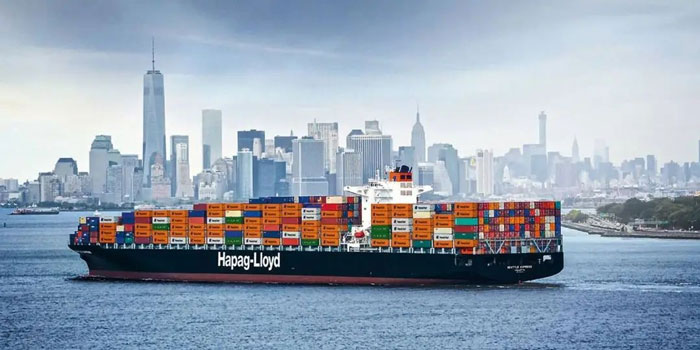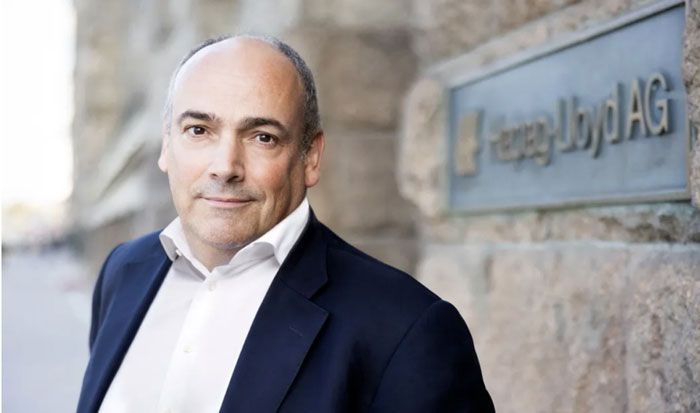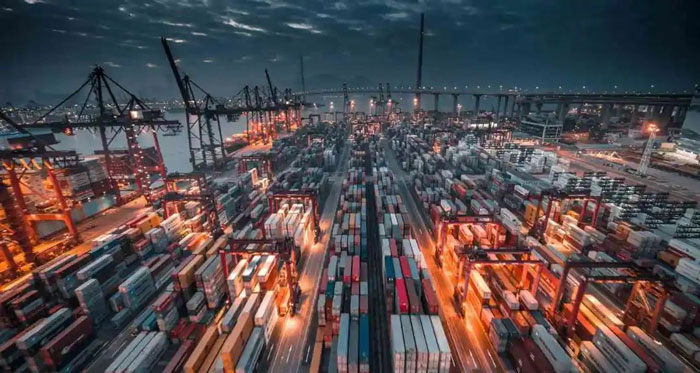

Hapag-lloyd CEO: Excess capacity in the shipping market is being offset by market variables
The threat of excess capacity that has hung over liner companies in the global container shipping market appears to be quietly receding. Despite the influx of new ship orders, Hapag-Lloyd CEO Rolf Habben Jansen believes the threat is no longer so imminent in the current environment.
The recent Red Sea crisis has brought new variables to the container shipping market. To avoid Houthi attacks in Yemen, ships had to bypass the Cape of Good Hope, greatly depleting available shipping capacity. The sudden challenges have forced liner companies to urgently deploy resources to meet global freight demand. At the same time, the volume of freight in the container market has increased significantly in the past few months, which also gives Hapag-Lloyd optimism.
However, he did not rule out that the addition of new ships could lead to a transition period of excess capacity in the container shipping industry, "but this does not mean that there will be a period of excess capacity, which is completely different from the market collapse after the 2008-2009 financial crisis."
Still, the surge in new ship orders has sparked widespread concern within and outside the industry. During the pandemic, the booming freight market prompted shipowners and shipping lines to order large numbers of new ships, especially in Asian yards, where the huge order book took up most of the shipbuilding capacity.
According to Alphaliner's data, between July 1 and August 12, shipping companies worldwide ordered a total of 75 new vessels with a total container capacity of more than 1.1 million TEU. Industry insiders warned that the figures showed that the market could face the risk of an imbalance between supply and demand.
However, Habben Jansen noted that the current crisis in the Red Sea region has led to high demand for vessels, forcing shipping companies to deploy all available vessels to keep the global supply chain functioning. "Without investment in new ships, we would not be able to cope with such a situation." So from that point of view, it's positive."
Looking ahead, Habben Jansen sees growth in global freight volumes exceeding expectations, predicting that growth could reach 4% or even higher this year. He also predicted that many of the older container ships that have been retained during the pandemic due to high freight rates will be phased out at an accelerated pace in the near future as they are no longer economically viable, especially after the implementation of the EU Emissions Trading System (EU ETS).
"You should take into account that scrapping has been delayed over the past few years due to our urgent need for every ship. As environmental regulations take effect, more ships will be phased out in the future." Habben Jansen adds.
Habben Jansen concludes: "The past year has certainly taught us that it is very difficult to accurately predict changes in supply and demand, and that having some spare capacity is actually a good thing."
The recent Red Sea crisis has brought new variables to the container shipping market. To avoid Houthi attacks in Yemen, ships had to bypass the Cape of Good Hope, greatly depleting available shipping capacity. The sudden challenges have forced liner companies to urgently deploy resources to meet global freight demand. At the same time, the volume of freight in the container market has increased significantly in the past few months, which also gives Hapag-Lloyd optimism.

However, he did not rule out that the addition of new ships could lead to a transition period of excess capacity in the container shipping industry, "but this does not mean that there will be a period of excess capacity, which is completely different from the market collapse after the 2008-2009 financial crisis."
Still, the surge in new ship orders has sparked widespread concern within and outside the industry. During the pandemic, the booming freight market prompted shipowners and shipping lines to order large numbers of new ships, especially in Asian yards, where the huge order book took up most of the shipbuilding capacity.

According to Alphaliner's data, between July 1 and August 12, shipping companies worldwide ordered a total of 75 new vessels with a total container capacity of more than 1.1 million TEU. Industry insiders warned that the figures showed that the market could face the risk of an imbalance between supply and demand.
However, Habben Jansen noted that the current crisis in the Red Sea region has led to high demand for vessels, forcing shipping companies to deploy all available vessels to keep the global supply chain functioning. "Without investment in new ships, we would not be able to cope with such a situation." So from that point of view, it's positive."
Looking ahead, Habben Jansen sees growth in global freight volumes exceeding expectations, predicting that growth could reach 4% or even higher this year. He also predicted that many of the older container ships that have been retained during the pandemic due to high freight rates will be phased out at an accelerated pace in the near future as they are no longer economically viable, especially after the implementation of the EU Emissions Trading System (EU ETS).
"You should take into account that scrapping has been delayed over the past few years due to our urgent need for every ship. As environmental regulations take effect, more ships will be phased out in the future." Habben Jansen adds.

Habben Jansen concludes: "The past year has certainly taught us that it is very difficult to accurately predict changes in supply and demand, and that having some spare capacity is actually a good thing."





